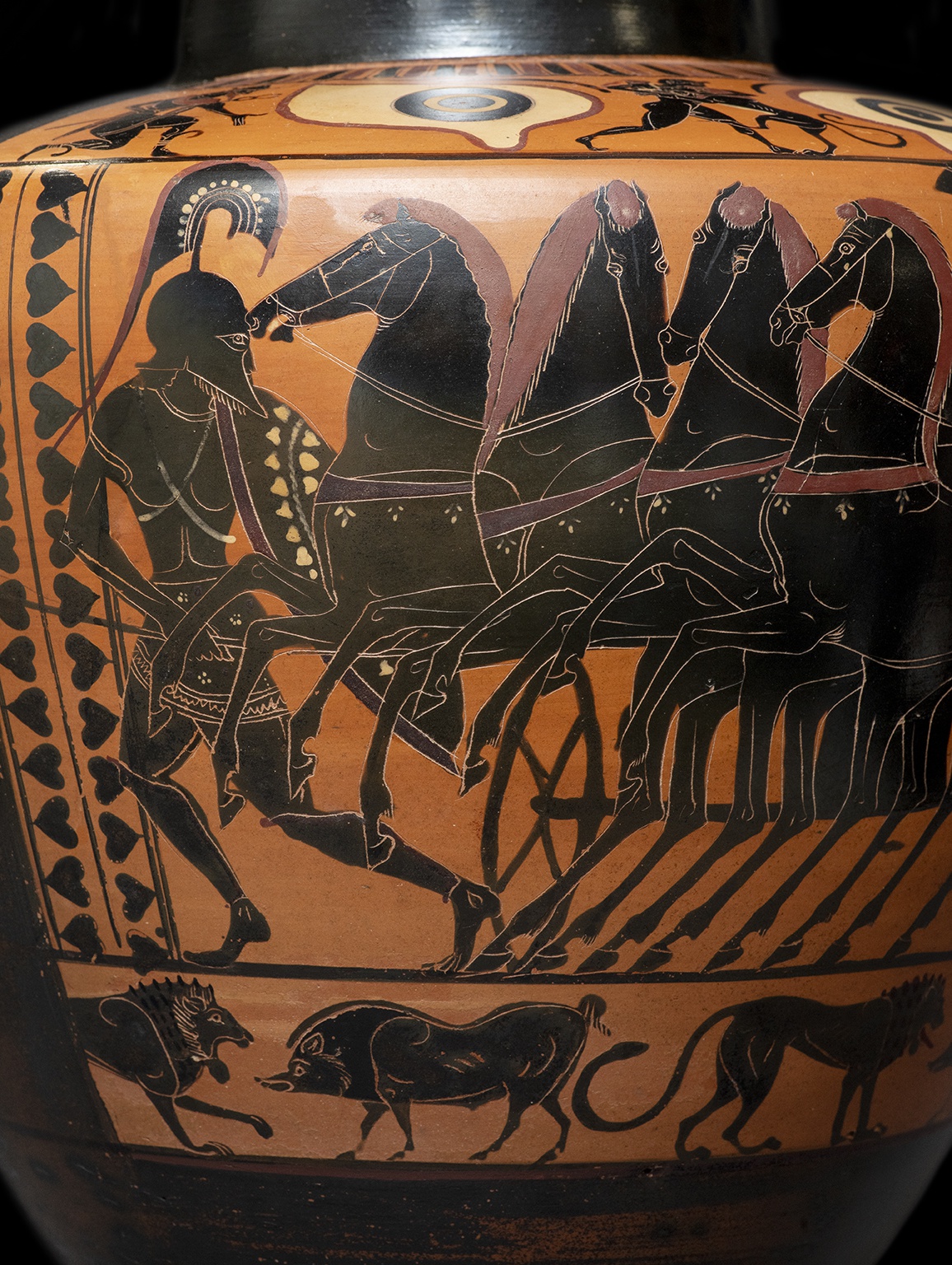
One of my most embarrassing sentences, and there have been many, was uttered just as I started in this business: 'Greek pots? Once you've seen one you've seen them all.’ S I L E N C E…
But to be fair to much younger me, isn’t there some truth to this? What about all those black and orangey-tan vases that line the emptier rooms of our museums, accumulating dust, the ones we walk by? Well, we should look at them, LOOK closer.
On this Greek 'pot' the main image is a war scene. There's a warrior with a spear wearing a Corinthian helmet with a high crest, tufted with horse hair. His eye is precisely drawn, staring out from the protective bronze helmet, the hairs of his beard protrude below his cheek-pieces. He wears a bronze cuirass, greaves on his shins, a short kilt embroidered with little clusters of dots and a broad zigzag hem - so detailed it could be replicated today - and carries a large circular shield decorated with ivy leaves. As he runs - yes, the movement is clear in his feet and toes (look!) he turns to stare over his shoulder, at what? Is he running with the chariot or being run over by it? Because the quadriga (look it up) is hard upon him, horses rearing, each looking wildly in different directions, their front legs raised as they race forward (Eadweard Muybridge, avant la lettre). They're being driven by another warrior. You can hear their hooves thundering, the attachments from their harnesses, jingling. The scene is alive but, like a photograph, frozen, a moment caught in time.
Behind it all a bird (an eagle?) dives and plunges in the sky.
But there's more, too much for now: Herakles wrestling the Nemean lion watched by Iolaus and Hermes (the god of art dealers...). A pair of apotropaic eyes (again, look it up!) a frieze of lions and boars.
There's no room for more (do you know HOW these things were made? It's astonishing) but I hope I've said a little to encourage you not to be like younger me: don't dismiss Greek pots so lightly…
Greek black-figure eye hydria
Athens, c.520 BC, attributed to the Antimenes Painter
Height 39.6cm
Provenance
Emile Foltzer (d.1982), Switzerland; acquired 1960s-70s
Madame Foltzer, Switzerland; by descent from the above